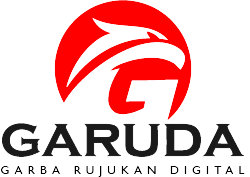PENGARUH PEMASARAN DIGITAL MENGGUNAKAN METODE SOSTAC TERHADAP KEPUTUSAN MENGGUNAKAN APLIKASI HAI MENTOR
DOI:
https://doi.org/10.34127/jrlab.v12i3.828Abstract
Industrial evolution has brought about major changes in the delivery of education, one of which is the emergence of learning applications. The Hai Mentor learning application is a learning startup platform to increase knowledge and the quality of learning for its users. However, its users still need to be more optimal. For this reason, an appropriate marketing strategy is needed through digital marketing using Sostac so that the Hai Mentor application can increase its users. The research aims to find out how digital marketing is using the Sostac method in the Hai Mentor application, how is the decision to use the Hai Mentor application, and how digital marketing influences the Sostac method on the decision to use the Hai Mentor application. This research is descriptive verification research. Descriptive is used to explore the variables studied, while verification measures the relationship between variables. The population of this study was students in the city of Bandung who had downloaded the Hai Mentor application with a sample size of 100. This research found that digital marketing carried out by the Hai Mentor application was in a high category; The decision to use the Hai Mentor application is in the sufficient category, and digital marketing has a significant effect on the decision to use the hai mentor application with a very strong level of influence classification.
Keywords: Digital Marketing, Purchasing Decisions
References
Annisa, Amalia. (2021). Sejarah Revolusi Industri dari 1.0 sampai 4.0. Artikel disajikan pada https://doi.org/10.13140/RG.2.2.20215.24488.
Arifin, M. F. (2020). Kesulitan Belajar Siswa dan Penanganannya Pada Pembelajaran. Jurnal Inovasi Penelitian, 1(5), 989-1000.
Baetzgen, A. and Tropp, J. (2013). Owned Media”: Developing a Theory from the Buzzword. Studies in Media & Communication, 1.
https://doi.org/10.11114/smc.v1i2.172.
Chaffey D, C. F. (2009). Internet Marketing: Strateg,Implementation, and. Practice. United States: Prentice Hall.
Claesson, Amanda dan Albin Jonsson. (2017). The Confusion of Content Marketing: A Study to Clarify The Key Dimensions of Content Marketing. Bachelor Thesis in Business Administration: International Business and Marketing.
Dhiyaah Karina, S. A. (2022). Pengaruh Perusahaan Start Up terhadap Pertumbuhan Ekonomi Indonesia Selama Pandemi Covid-19. Berajah Journal, Volume 2:Nomor 1, 156-166.
Maczuga, Piotr, Karolina Sikorska, Anna Jaruga, Krzysztof Zielinski, Elisabetta Boncio, Giuseppe Cardoni, Susanna Paoni, Diana Arutjunjan, Diane Muscat, Monira Kerler, Andrea Poschalko. 2014. Content Marketing Handbook: Simple Ways to innovate Your Marketing Approach. Warsaw: CMEX.
Muhasim. (2017). Pengaruh teknologi digital, terhadap motivasi belajar peserta didik. Jurnal Studi Keislaman dan Ilmu Pendidikan. 5(2): 53-77.
Peter, J Paul and Olson, Jerry C. (2013). Perilaku Konsumen dan Strategi Pemasaran. Jakarta: Salemba Empat.
Sugiyono. (2021). Metode Penelitian Bisnis. Bandung: CV. Alfabeta.
Sujarweni, V. Wiratna dan Endrayanto, Poly. (2020). Statistika untuk Penelitian. Yogyakarta: Graha Ilmu.
Wijaya, Philip Kristy dan Hermawan, Aditiya. (2018). E-Marketing Applications Based On Virtual Reality Using Sostac Planning Method On Sales Property. Tech-E: Vol. 1 No. 2 (2018). http://orcid.org/0000-0002-3372-8562.
Downloads
Published
Issue
Section
License
Jurnal Lentera Bisnis disebarluaskan di bawah Lisensi Creative Commons Atribusi-BerbagiSerupa 4.0 Internasional.
Berdasarkan ciptaan pada https://plj.ac.id/ojs/index.php/jrlab




